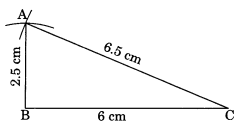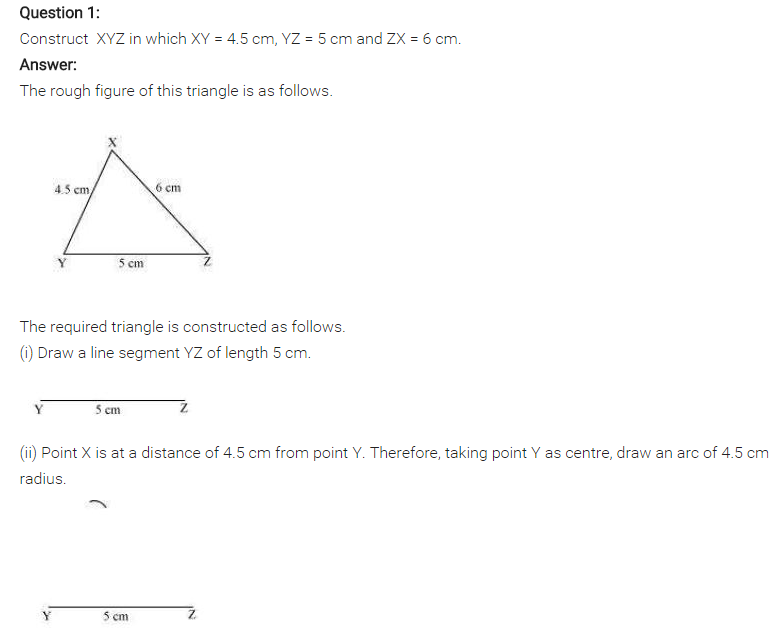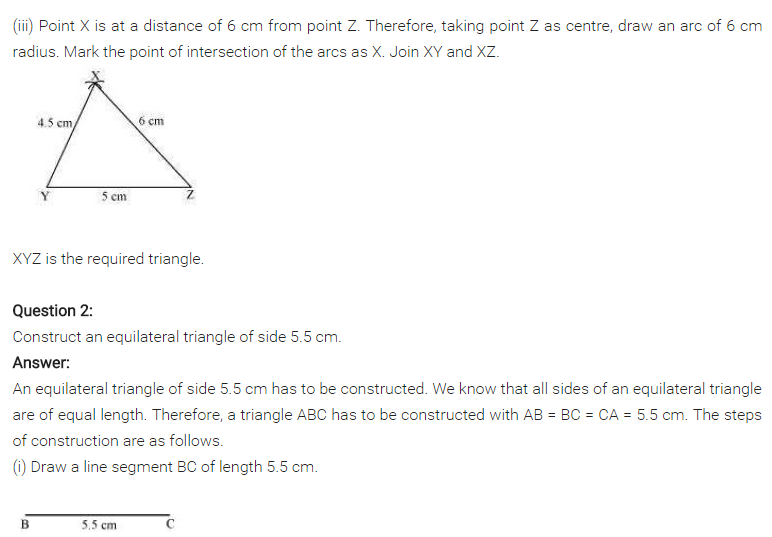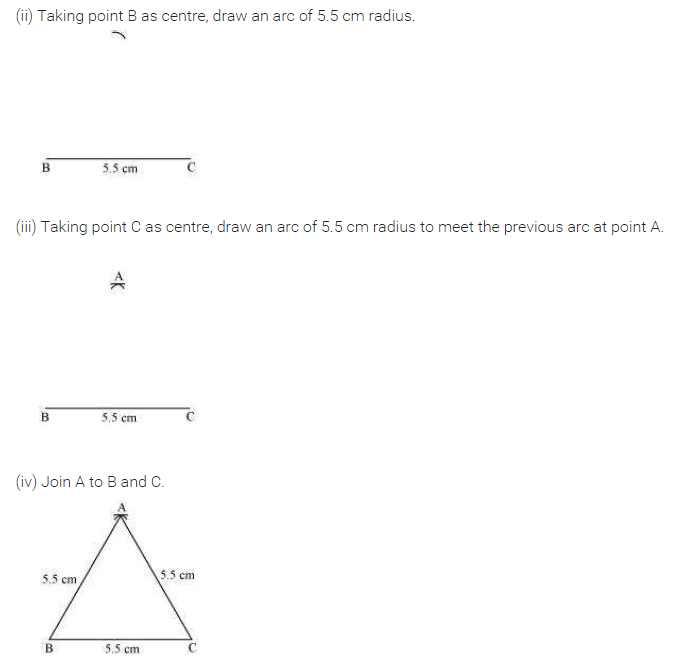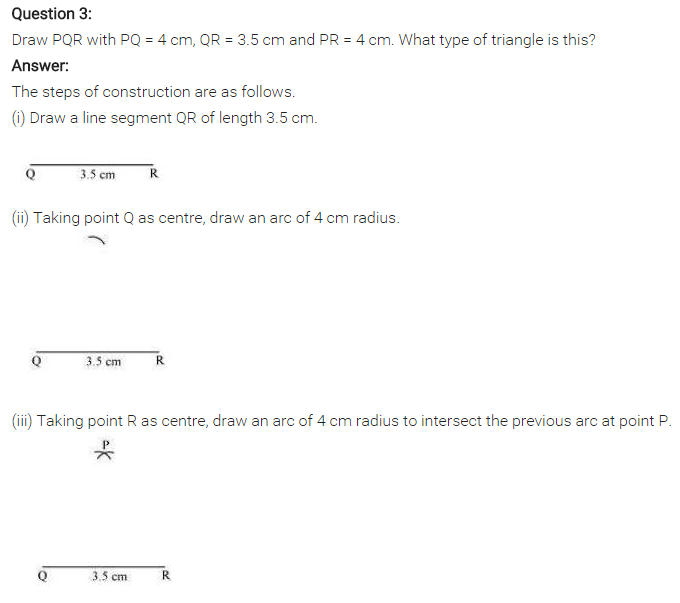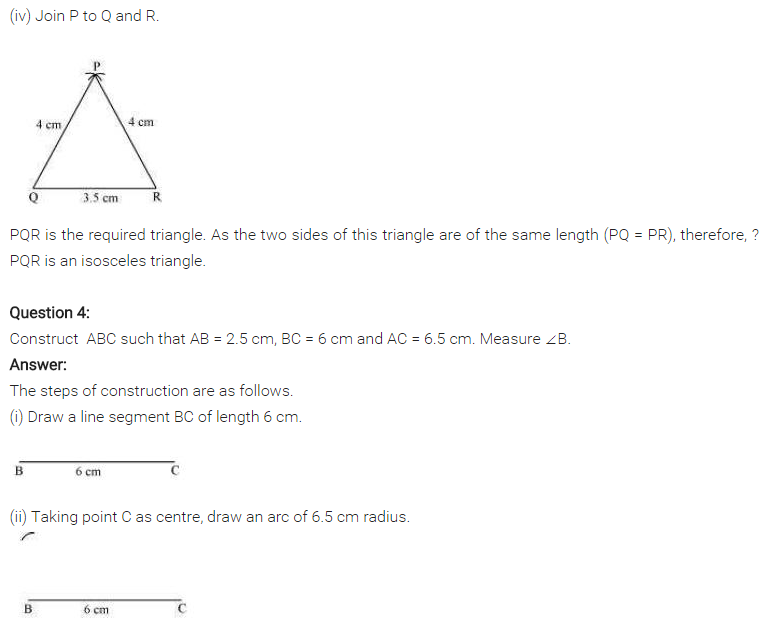NCERT Solutions for Class 7 Maths Chapter 10 Practical Geometry Ex 10.2
- Class 7 Maths Practical Geometry Exercise 10.1
- Class 7 Maths Practical Geometry Exercise 10.2
- Class 7 Maths Practical Geometry Exercise 10.3
- Class 7 Maths Practical Geometry Exercise 10.4
- Class 7 Maths Practical Geometry Exercise 10.5
- NCERT Solutions for Class 7 Maths Chapter 10 Practical Geometry Exercise 10.2
Ex 10.2 Class 7 Maths Question 1.
Construct ∆XYZ in which XY = 4.5 cm, YZ = 5 cm and ZX = 6 cm.
Solution:
Steps of construction:
(i) Draw XY = 4.5 cm.
(ii) Draw an arc with centre Y and radius 5 cm.
(iii) Draw another arc with centre X and radius 6 cm to meet the first arc at Z.
(iv) Join ZY and ZX.
(v) XYZ is the required triangle.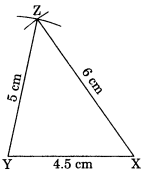
Using SSS criterion
Ex 10.2 Class 7 Maths Question 2.
Construct an equilateral triangle of side 5.5 cm. Solution: Steps of construction:
(i) Draw BC = 5.5 cm.
(ii) Draw two arcs with centres B and C and same radius of 5.5 cm to meet each other at A.
(iii) Join AB and AC.
(iv) ABC is the required triangle.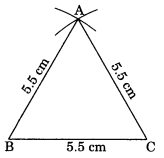
Using SSS criterion
Ex 10.2 Class 7 Maths Question 3.
Draw ∆PQR with PQ = 4 cm, QR = 3.5 cm and PR = 4 cm. What type of triangle is this?
Solution:
Steps of construction:
(i) Draw QR = 3.5 cm.
(ii) Draw two arcs with centre Q and R and same radius of 4 cm to meet each other at P.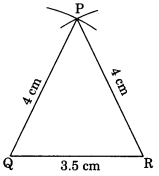
(iii) Join PQ and PR.
(iv) PQR is the required triangle.
(v) Since PQ = PR = 4 cm, therefore APQR is an isosceles triangle.
Using SSS Criterion
Ex 10.2 Class 7 Maths Question 4.
Construct ∆ABC such that AB = 2.5 cm, BC = 6 cm and AC = 6.5 cm. Measure ∠B.
Solution:
Steps of construction:
(i) Draw BC = 6 cm.
(ii) Draw two arcs with centres B and C and radius 2.5 cm and 6.5 cm respectively to meet each other at A.
(iii) Join AB and AC.
(iv) ABC is the required triangle.
[Using SSS criterion]